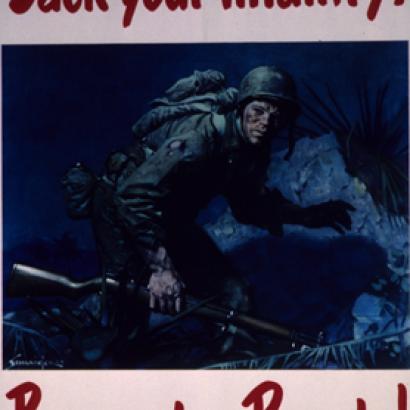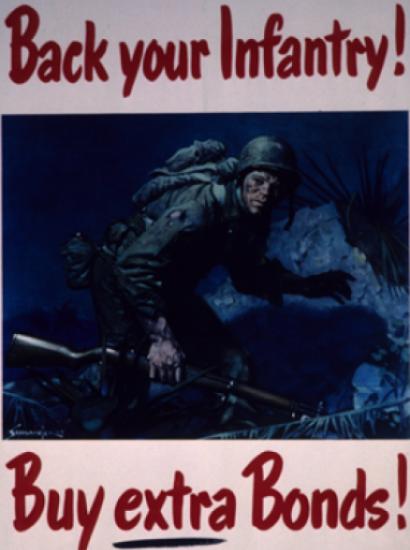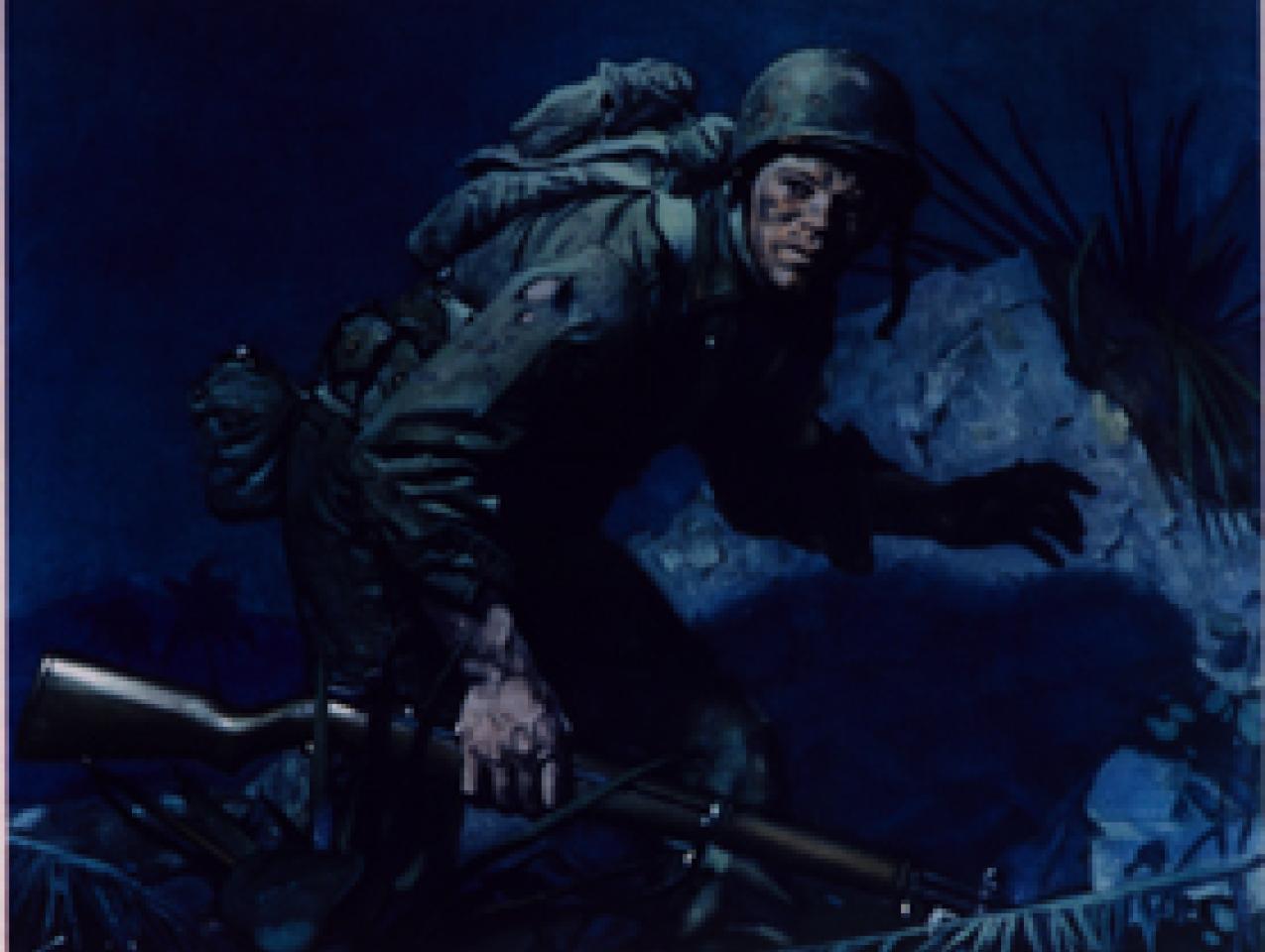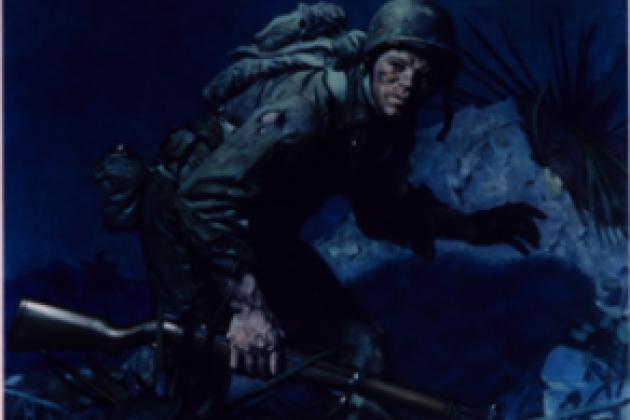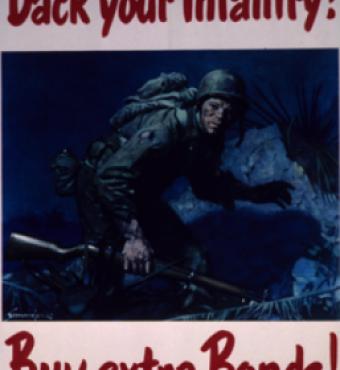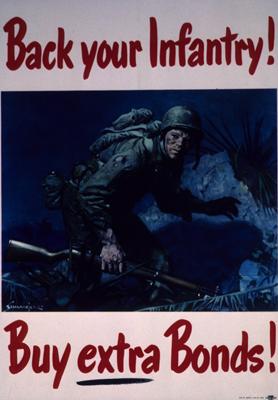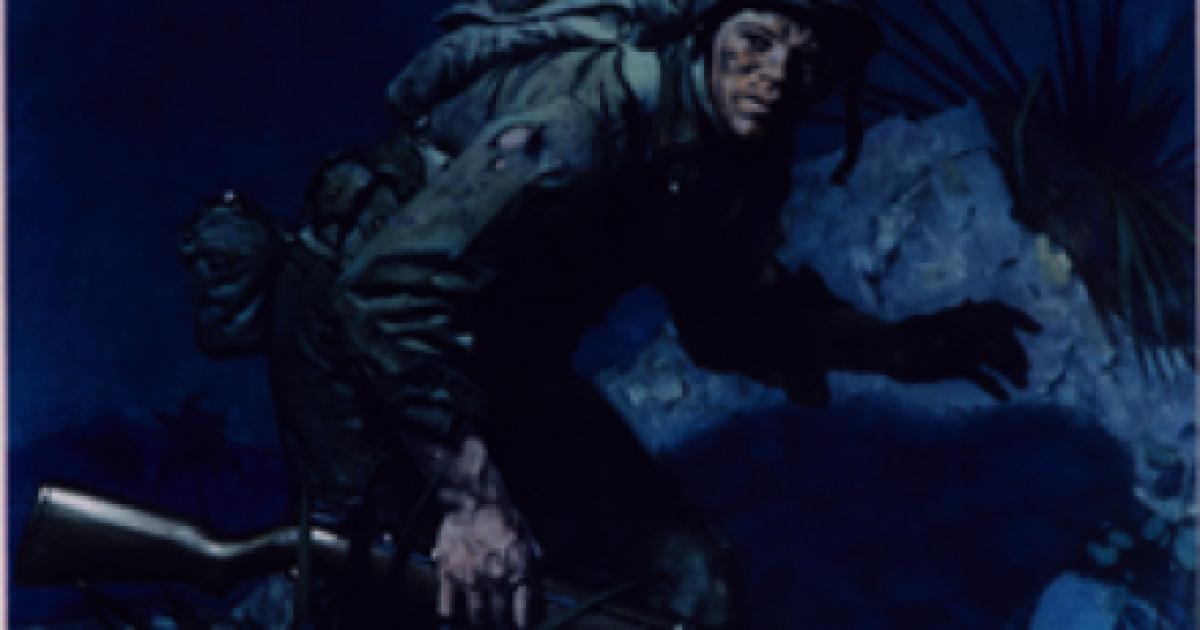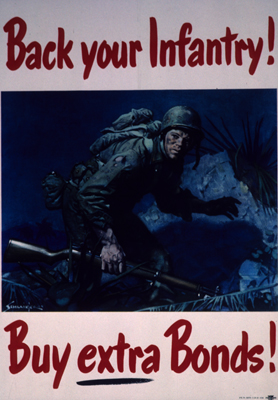
“God is on the side of the big battalions.”
The historical record is opaque about whether it was Napoleon, Turenne, Voltaire, or indeed any identifiable Frenchman who made that statement, but, in this age of supposedly post-industrial warfare, He has apparently changed His mind. Equipped with an iPhone and GPS-guided munitions, God has broken the phalanx, emptied the battlefield, and super-empowered the individual. Mass—particularly the large military formations of the modern era: infantry divisions and corps, aircraft carrier battle groups, tactical air wings—has gone out of style.
Ironically, the United States, which became history’s “sole superpower” by crushing Nazi Germany and Imperial Japan and outlasting the Soviet Union, has become the leading exponent of strategic “agility” and operational “mobility”—or, anything except durability. The impulse has reached the level of farce in the campaign to roll back the Islamic State in Iraq and Syria. President Obama has repeatedly lamented the inability to formulate a “complete strategy” for the war, complaining that while ISIS forces are “nimble and they’re aggressive and they’re opportunistic,” his cumbersome coalition of U.S. advisers, the vanishing Iraqi army, and Iranian-backed Shi’a militias is not.
While the main source of Obama’s ISIS problems is his own compromised commitment to the fight, he found a natural partner in the form of the modern U.S. military. Since the inception of the “all-volunteer” force after Vietnam, the purpose of American military professionals has been to remake themselves from Joe Frazier-style brawlers into Muhammad Ali-style boxers. In the context of the Cold War face-off, that made sense; the Red Army was a living testament to Stalin’s maxim that “quantity has a quality all its own,” so the Reagan buildup was premised on the idea that Western quality could give Eastern quantity a run for its money. And because NATO’s operational goal was first of all defensive—stop a Soviet blitzkrieg across the central German plain—technological and tactical improvements were guided by clear objectives.
But if this capability-over-capacity preference grew from the particular operational problems of the late 1970s and early 1980s, it now reflects a deeper sensibility about the nature of war, one that resonates very strongly with a small, professional force. It should come as no surprise that our staff colleges venerate Lee before Grant, and Guderian before Rotmistrov. The “lesson” of Operation Desert Storm was not that a global great power had overwhelmed a tin-pot dictator, but that well-equipped and trained regulars had bested, bloodlessly, an Arab imitation of the conscript masses of the world wars. General Norman Schwarzkopf concluded his memoir, despite “feel[ing] that retired general officers should never miss an opportunity to remain silent,” with at least one prediction: “I am quite confident that in the foreseeable future armed conflict will not take the form of huge land armies facing each other across extended battle lines.”
And so, through the 1990s, as the U.S. military found itself caught between continuing worldwide missions—the planet had not gotten any smaller nor humanity less unruly—and shrinking defense budgets, it began to break itself into smaller and smaller pieces. Air fleets were counted by squadrons rather than wings, and the number of aircraft per squadron reduced. Naval battle groups contained fewer ships and were more frequently organized just around surface combatants rather than carriers. The Marine Corps shaved a little closer, but it was the U.S. Army, facing a kind of existential crisis, that went the farthest down the smaller-is-better path.
Leading that charge was Douglas Macgregor, who had served as the operations chief in the 2nd Armored Cavalry Regiment in Desert Storm. That unit was the first to make contact with the Republican Guard, the elite of Saddam Hussein’s army; the resulting “Battle of 73 Easting”—named for the north-south grid line on service maps in the otherwise featureless desert— rapidly became the centerpiece in the Army’s narrative of its virtues. Macgregor’s book Breaking the Phalanx: A New Design for Landpower in the 21st Century was a paean to the role information technologies would play in a “revolution in military affairs” that would reward speed and rapid decision-making. It was also, when published in 1997, a bold criticism of an Army leadership viewed as not just too slow to adapt to changing battlefield realities, but also institutionally incapable of innovation. Macgregor argued that the Army’s divisional structure was too ponderous. Instead, the service should be organized into more nimble and operationally independent “combat groups” of about 5,000 soldiers that would, thanks to technological advances, have command-and-control capabilities surpassing those of older division and brigade headquarters while also fitting more seamlessly into joint-service formations.
The man found his moment in the spring of 1999 during the Kosovo crisis. The palsied NATO air campaign had failed to have the desired effect on the Serbian forces of Slobodan Milosevic, who were continuing their “ethnic cleansing” of Kosovars. Unable to convince President Clinton and European leaders to commit ground formations, NATO commander Gen. Wesley Clark got permission to employ several dozen Army Apache attack helicopters to better support the “Kosovo Liberation Army.” This so-called “Task Force Hawk” took 30 days to wheeze its way from Germany to bases in Albania, and even then the Army demanded that a mechanized infantry battalion be subsequently deployed to guard the airfields. The result was, as Andrew Krepinevich of the Center for Strategic and Budgetary Assessments and another advocate of defense “transformation” put it, that “more and more people in Congress, even people in the Pentagon, began to ask if the Army is strategically relevant. Can the Army get to one of these unpredictable trouble spots in a hurry?”
When, that summer, Gen. Eric Shinseki was promoted from commander of U.S. Army Europe –where he had witnessed the troubles of Task Force Hawk at painfully short range—to become Army chief of staff, he immediately unveiled a plan for a medium-weight “Objective Army” wherein information technologies would allow for the lethality of traditional tank units but with a smaller “future combat system”; the knowledge of a “transparent” battlefield would provide the protection of heavy armor. The FCS would be a family of vehicles with a common chassis for the entire Army—and it would be small and light enough to fit in a C-130 transport plane.
It fell to Shinseki’s successor, Gen. Peter Schoomaker, to complete the redesign of the Army away from larger divisions and corps into “brigade combat teams” of 3,500—even smaller units than those imagined by Macgregor. Schoomaker, whose career was primarily in special operations forces and who was one of the original leaders of the Army’s elite “Delta Force,” had been brought out of retirement by an impatient Defense Secretary Donald Rumsfeld, himself recruited to a second term in the Pentagon by new President George Bush. Rumsfeld was to be the “secretary of transformation,” bringing a troglodytic “industrial age” military into the information age. The new Army unit designs not only made for smaller maneuver units but also chopped logistics, fire support, intelligence, and other forms of support from the divisional structure. The Army was to replace its traditional hierarchy with something “flat,” and thus presumably more nimble.
Rumsfeld was in a hurry to bring his smaller-lighter-fast-better approach to bear, and he saw the post-9/11 invasions of Afghanistan and Iraq as opportunities to force the pace of change. The striking successes of both campaigns confirmed Rumsfeld in his presumptions; as his senior military commander, Gen. Tommy Franks, declared, “Speed kills.” Military transformation became a goal of the Bush Administration’s formal national security strategy, and defining a “capabilities-based approach”—in lieu of an assessment of overall capacity—became the purpose of the Pentagon’s force-planning review. From 1945 to 2001, U.S. military planners asked, “How much is enough?” Now they asked, “What kind?”
The problems with this approach became almost immediately apparent in Iraq, where the “small footprint” of U.S. forces, combined with the administration’s antipathy toward “nation building,” opened the door to multiple insurgencies and, by 2006, a sectarian civil war. The failure to establish security in Iraq also cost the Republican Party its congressional majority and Rumsfeld his job. To his credit, President Bush committed to a “surge” of forces in Iraq, a counterinsurgency, and—the least noticed change in policy—an expansion of the Army that eventually added about 150,000 soldiers to its active-duty end strength. The skeletal brigade combat teams were expanded with “enablers” that brought their strength back to 5,000 soldiers and more. And the service has now formally returned to a more traditional brigade design, even under the fiscal constraints imposed by the Budget Control Act of 2011, the ongoing threat of sequestration, and previous reductions. In other words, the present Army will be much smaller in total, but its pieces will be larger than they have been for the past two decades.
Finally, if the American purpose in the world is to sustain a favorable global balance of power across Eurasia—the traditional U.S. strategy again affirmed by the recent National Defense Panel—then “agility” and “nimbleness” must not be the primary characteristics of its military posture. It is more important to deter adversaries and reassure allies by being constantly present, and, when in conflict, strike repeated heavy blows. Those capacities come from large, robust formations, which can bring additional resources to bear to reinforce in case of setbacks or exploit successes. To anyone outside the White House, the futility of trying to employ strike-and-raid methods against quicksilver enemies like ISIS or al-Qaeda is apparent. The way to destroy ISIS’s military power is not to out-box them but to pound them.
What has proved true in irregular war is likely to be true in the high-technology conventional realm as well. Alas, the “transformational” mindset is now so deeply rooted—it has itself become the entrenched orthodoxy—that it is distorting how the Pentagon views the growth of Chinese military power: “Air-Sea Battle” and its doctrinal progeny are, in sum, an attempt to apply raid-and-strike methods to a rising continental power of more than 1 billion people. In this, of all “strategic competitions,” numbers matter. Compelling China to do our will—that is, accommodate itself to the existing liberal order—is possible, but only if Beijing perceives that the cost for overturning that order is too high. Cruise missiles and Seal Team 6 may annoy the Chinese, but cannot instill much fear. What might do the trick is a large American-led coalition with the capacity to sustain a long, twilight struggle and to deliver painful punishment—to bring the effects of massed military power to bear.
In the Pacific as in the Middle East, the United States needs to get right with Napoleon’s God.







